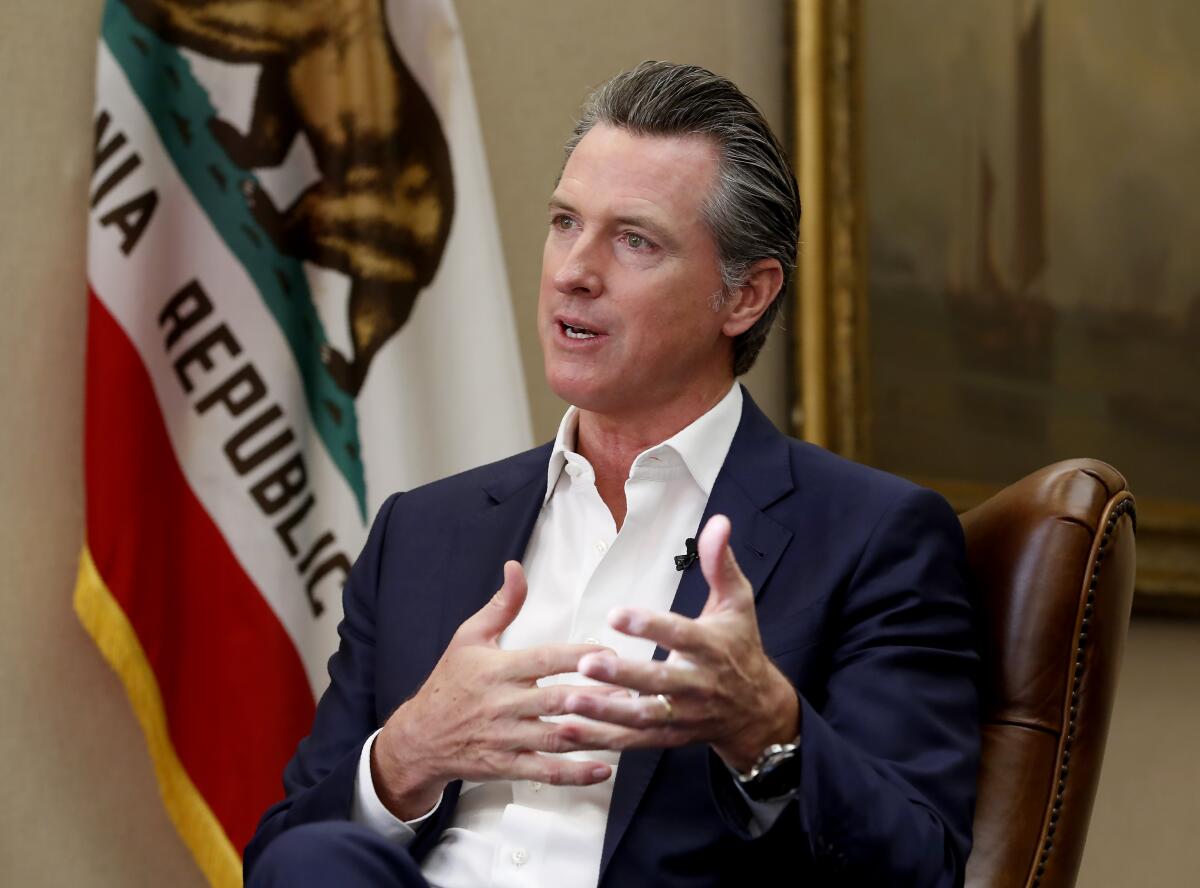Q&A: What you need to know about Gov. Newsom’s drug plan for California

- Share via
In his state budget set to be released Friday, Gov. Gavin Newsom is expected to unveil a plan to make California the first state to sell its own brand of generic prescription drugs in an effort to drive down rising healthcare costs.
Newsom provided few details about the mostly conceptual proposal. Here are answers to some questions based on what is known.
How would it work?
The state could contract with one or more makers of generic drugs to manufacture certain prescriptions under the state’s own label, according to Newsom’s office. Those drugs would be available to all Californians for purchase, presumably at a lower cost.
The plan would target generic prescription drugs, which make up 90% of the prescriptions filled in the United States, said Geoffrey Joyce, director of health policy at the USC Schaeffer Center. It would not apply to brand-name prescription drugs, which are typically more expensive.
The proposal would increase competition in the generic drug market, which would probably lower prices, Joyce said.
“A trip to the doctor’s office, pharmacy or hospital shouldn’t cost a month’s pay. The cost of healthcare is just too damn high, and California is fighting back,” Newsom said in a statement.
Has this been done before?
Sen. Elizabeth Warren has proposed that the federal government manufacture its own generic drugs to reduce costs, but no state or governmental entity in the U.S. has actually attempted something like this before, experts say.
However, in 2018, more than 500 hospitals banded together to launch their own drug company, called Civica Rx, to manufacture generic drugs to sell at a lower cost.
Leaders of the consortium, which includes systems such as the Mayo Clinic and Providence St. Joseph Health, said they were fed up with rising drug costs and wanted to make medicines available at more reasonable prices.
“That was a novel idea when it came out,” said Jack Hoadley, Georgetown health policy research professor emeritus. “It could be that the governor’s office heard about that.”
Late last year, a patient was treated with a Civica Rx medication for the first time, according to the company.
How would this affect Californians?
The average American paid $139 in out-of-pocket expenses in 2016 for prescription medicines that cost $1,016, according to the Peterson-KFF Health System Tracker. Annual per capita spending on prescription drugs has more than doubled since 2000.
In recent years, some generic drugs have experienced huge price increases, sometimes into the thousands of percent. For example, the price of a month’s supply of clomipramine, a common antidepressant, recently jumped from $16 to $348.
Newsom’s plan would probably address those increases by introducing competition in drug markets where there are only a few manufacturers. But in general, it is uncommon drugs that have only a few manufacturers, said Joyce.
More widely prescribed medicines, such as those that treat high cholesterol and high blood pressure, have multiple producers and already competitive pricing, he said.
“In terms of savings to a typical family, it would be very modest,” he said.
What effect would this have on rising drug costs?
When a pharmaceutical company invents a new drug, it patents the formula and gets the exclusive right to make it for several years. Those are called branded prescription drugs.
When the period of exclusivity ends, other companies can manufacture the same medicine and sell it. Those are called generics.
But most of the nation’s drug spending goes for pricey branded prescription drugs, such as those for complicated diseases like cancer and multiple sclerosis, experts say.
It is harder to regulate these drugs because of the exclusivity patents, experts say. Some also fear that setting price caps on these drugs will stifle innovation that could lead to breakthroughs.
Newsom’s plan would apply only to generics, which account for less than a quarter of the nation’s drug costs.
“It has the potential to correct some of the problems in that market, but it’s not a panacea,” Joyce said. “If generic drugs are at most 25% of drug spending, then you’re going to be making a modest dent in overall drug spending.”
More to Read
Sign up for Essential California
The most important California stories and recommendations in your inbox every morning.
You may occasionally receive promotional content from the Los Angeles Times.










